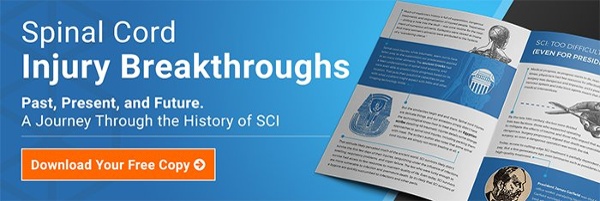5 of the Most Interesting Facts about Spinal Cord Injuries
Common understandings and medical knowledge about spinal cord injuries (SCIs) have changed significantly over the past 70 or so years. According to a 2017 article in the journal Spinal Cord, “estimated life expectancies improved significantly between the 1950s and 1980s, plateaued during the next two decades, before slightly improving again since 2010.”
A spinal cord injury is something that can happen to anyone regardless of their age, gender, race, or economic status. The most recent data from the National Spinal Cord Injury Statistical Center (NSCISC) estimates that between 247,000 to 358,000 people are living with spinal cord injuries in the United States and that another 17,700, on average, sustain SCIs each year.
Spinal cord injuries, which are most commonly caused by automobile accidents, disproportionally affect men, who make up 78% of new cases.
There is still much to learn about SCIs, and medical research is making advances each year in different areas. However, there are some interesting “tidbits” of info to know. We’ve put together a list of five of the most interesting facts about spinal cord injuries:
1. People with Spinal Cord Injuries May Not Sweat
Did you know that the spinal cord plays an integral role in your ability to sweat? When you suffer a spinal cord injury, the communication between your brain and sweat glands below the injury site may be impeded or eliminated depending on your level of injury and its severity.
Anhidrosis, also known as hypohidrosis, is the inability to sweat normally. Issues with sweating and body thermoregulation (temperature regulation) are common symptoms of autonomic dysfunctions. This means that spinal cord injury survivors whose sweating abilities are impacted are unable to cool themselves and require air conditioning, water, or fans to avoid overheating or heatstroke.
2. Spinal Cord Shock Can Mimic Paralysis After an Injury
After a traumatic spinal cord injury, people who experience a reduction or loss of reflexes may assume that the paralysis or lack of reflexes is permanent. However, that is not always the case. Spinal shock is a relatively temporary condition that can last anywhere from a few days to a few weeks, months, or even several years depending on several circumstances including the severity and location of the injury, and how spinal shock related terms are defined.
As the shock begins to lessen and symptoms begin to decrease, patients may begin to recover their reflexes gradually.
3. SCI Survivors Produce Fewer Human Growth Hormones
More than 70% of the spinal cord injury population produces fewer growth hormones (GH) from the pituitary gland after their injuries.
4. Growth Hormone Treatments May Aid SCI Recovery
Research on the use of growth hormones in spinal cord injury treatments has been gaining interest and traction over the past several years. A study conducted in 2017 in Barcelona, Spain, suggests that the use of growth hormones could be a potential treatment option in the future and that there is a need for additional research in this area.
In the Spain study, 18 people with complete spinal cord injuries received either a growth hormone or placebo treatment:
“Those treated with growth hormone had significant improvements in the measures of self-care and respiration and sphincter control at both three and six months. The growth hormone group also regained far more feeling below the site of spinal injury after six months of treatment compared with the placebo group.”
5. You Can Still Become a Parent After a Spinal Cord Injury
Contrary to popular belief concerning fertility after a spinal cord injury, starting a family or having additional children post-injury is still possible for men and women. Although you or your loved one may experience a loss of mobility or sensory functions, fertility frequently remains unaffected.
In fact, medical advances have made it so that many men and women with SCIs have been able to have children. Although women with spinal cord injuries may have issues with self-lubrication, they are still able to become pregnant and carry their child to term (unless there is another underlying fertility issue, such as polycystic ovarian syndrome [PCOS]).
For men, it can be a bit more challenging concerning ejaculation after an SCI because the injury may impede that ability. Although their ability to ejaculate can be affected, their sperm production is frequently not impacted. When trying to have a biological child, men can inseminate their partners through a few different methods, including:
- Penile vibratory stimulation (PVS),
- Intrauterine insemination (IUI), or
- In vitro fertilization (IVF).
To learn more about spinal cord injury research, click on the image below.
Stay Updated on Advancements On Traumatic Brain &
Spinal Cord Injuries
About the Author





